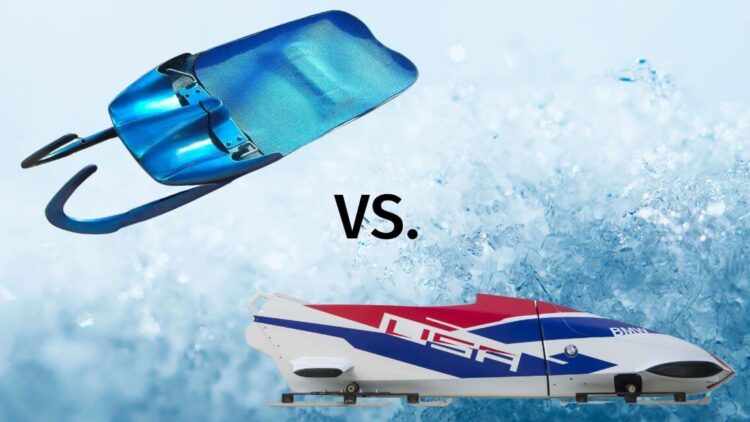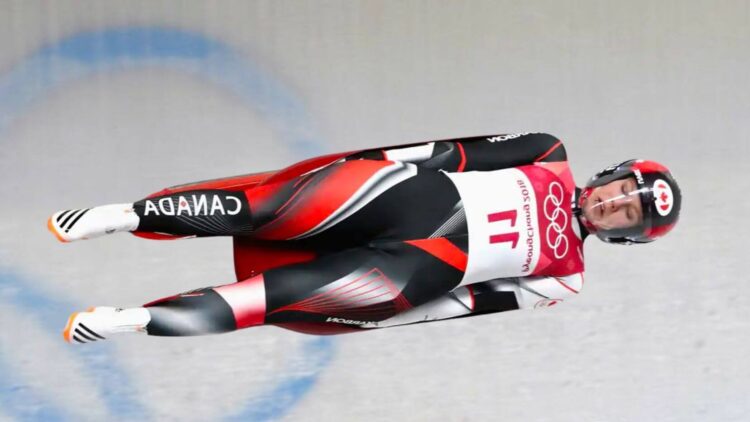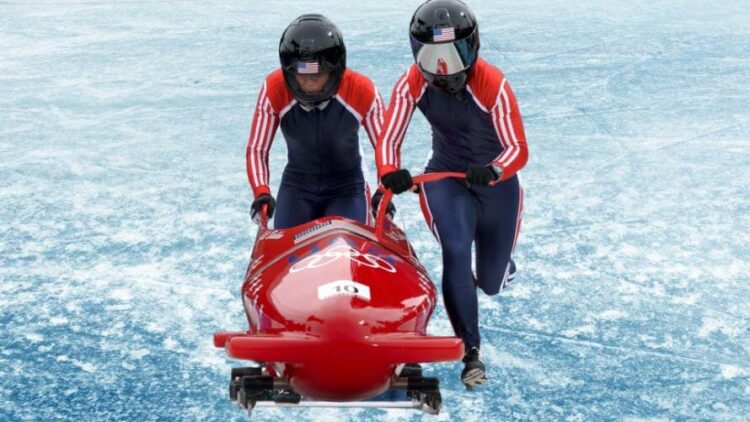
Luge and bobsled are both winter sled sports featured in the Winter Olympics. The two sports share many similarities, for example, both events take place on the same track, and competitors can reach speeds up to 90 miles per hour. However, despite these similarities, luge and bobsled require vastly different skill sets, with neither sport featuring skills that are very transferable to the other.
SIMILARITIES
Before covering the many differences between luge and bobsled, it is important to expand upon the main similarities between the two sports.
For starters, luge and bobsled require athletes to ride a bladed sled down an ice track. Although the sleds used in each sport are entirely different in design, they both race down the same tracks in competitive events.
Additionally, both sled sports require athletes to wear protective helmets and bodysuits designed to protect against ice burn caused by sliding down the ice at high speeds.
As previously mentioned, both sports involve competitors reaching speeds of over 90 miles per hour. However, luge is generally considered to be the fastest of all the sled sports, although the difference in speed between them is somewhat trivial. They are both also well known sports in the Olympic Winter Games.
DIFFERENCES

While there are some fundamental similarities between bobsled and luge, the truth is that the two sports are as different as two sled sports can be. With a huge key difference being their sleds.
EQUIPMENT
While the protective equipment used in both sports is similar, the gloves and shoes used in each greatly differ. This is because in luge, the athlete is seated on the sled the entire run; in contrast, bobsled requires the athletes to sprint at the start of their run.
This difference in starting position is the reason why luge athletes have spiked gloves while bobsled athletes use spiked shoes; luge sport requires athletes to use their arms to generate their starting momentum, while bobsled requires the athletes to use their legs initially.
EVENTS
Luge and bobsled both feature events that allow athletes to compete alone or in pairs. In bobsled, the second teammate hops in the back of the sled and takes control of the sled’s braking mechanism. In luge, the two teammates essentially lay on top of each other for the entire run.
Unlike luge, however, bobsled features a four-person event as well (think: Cool Runnings). Although unique to bobsled, the two additional members only affect the run by the extra push they provide at the start of the race and their additional weight, helping the sled move faster.
SLEDS
By far the most significant difference between luge and bobsled is the sleds used for each sport.
In bobsled, competitors ride in a long (9 to 12.5 feet) and heavy (365 to 462 pounds) sled that is entirely enclosed other than part of the top and back. These sleds feature a handle-based steering mechanism and a brake system used to stop the sled at the end of the run.

In luge, competitors ride in a 50-pound fiberglass sled with steel runners. Unlike bobsled, in which the athletes sit inside the sled, a luge sled require the athlete(s) to sit on top of the flat sled, so there are no protective sides except for the handles. Luge athletes lay down on their backs for the majority of their runs.
STEERING
While bobsleds have a steering mechanism built-in, luge sleds are completely lacking in this regard. Therefore, to steer the luge down the track, competitors must shift their body weight on their sled and use their feet to push down on the runners/blades beneath the sled to slightly alter their course.
Although bobsleds do have the handle-based steering apparatus, this method only creates minimal adjustments in the sled’s trajectory. Because of this, bobsled athletes also occasionally shift their body weight to help guide the sled down the track.
THE START
Although luge and bobsled both use the same tracks, luge races begin closer to the downhill portion of the track, while bobsled starts with an extended non-sloped part of the track.
For luge, athletes start the race sitting on their sleds while holding onto two handles—one on each side of the track. To generate their initial momentum, the athlete(s) utilize a six-phase process to propel themselves forward before using their spiked gloves to paddle their sled further downhill.

For bobsled, athletes begin standing on either side of their sled. Then, using their spiked shoes, push the sled while sprinting toward the hill. This initial push is arguably the most important part of a bobsled run, as it is the one part of the race in which the sled is not being propelled by gravity (since the start is not sloped).
SCORING
As both sled sports are centered around racing down a hill to a finish line, it shouldn’t be surprising that both sports award the sled with the fastest time. Furthermore, both sports require each sled to perform four total runs, with all four times being added together for a final time.
One difference exists between bobsled and luge regarding the scoring process: doubles luge only consists of two runs, while all three bobsled events utilize four total runs. Therefore, while most bobsled and singles luge times will be between three and four minutes, luge doubles times will commonly be below two minutes.
MAXIMUM SPEEDS
Luge and bobsled can both reach a speed of more than 90 miles per hour. And while they are both incredibly fast, luge holds a faster overall average speed. That being said, bobsled has the fastest recorded speed at 97 miles per hour in a 2019 competition. Luge is not far behind at all, though, with a fastest recorded speed of 96 miles per hour.
- 30 GAMES TO PLAY OVER TEXT - April 22, 2024
- 20+ FREE PRINTABLE BABY SHOWER GAMES - April 16, 2024
- 20+ College Party Games for the Best Night Ever! - April 2, 2024